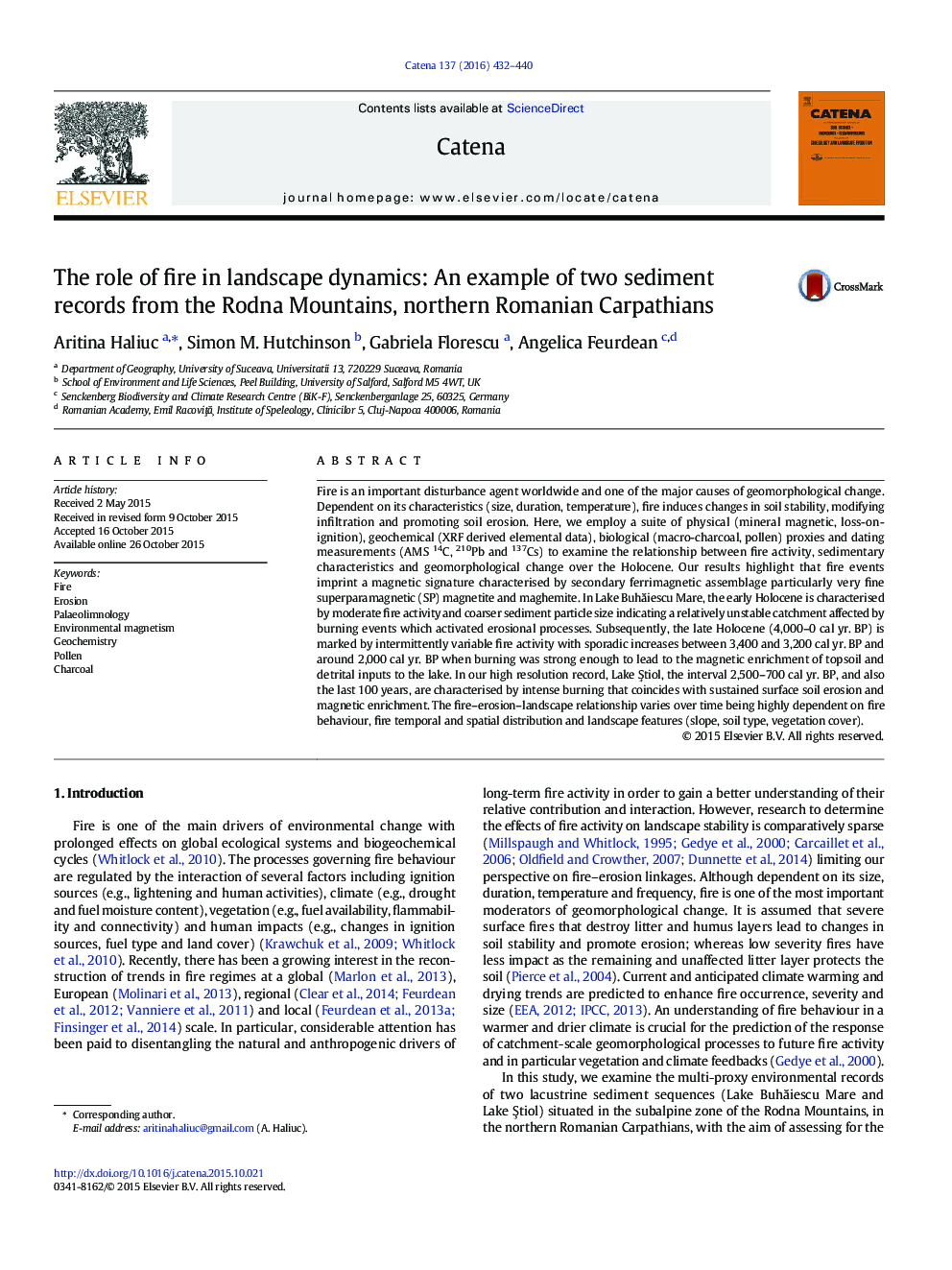| کد مقاله | کد نشریه | سال انتشار | مقاله انگلیسی | نسخه تمام متن |
|---|---|---|---|---|
| 6407996 | 1629215 | 2016 | 9 صفحه PDF | دانلود رایگان |

- Multi-proxy approach exploring fire-vegetation-geomorphic linkages
- Physical, geochemical, biological proxies
- Dating measurements (AMS 14C, 210Pb and 137Cs)
- Fire events related to changes in magnetic and geochemical parameters
- A complex response of catchment to burning activity
Fire is an important disturbance agent worldwide and one of the major causes of geomorphological change. Dependent on its characteristics (size, duration, temperature), fire induces changes in soil stability, modifying infiltration and promoting soil erosion. Here, we employ a suite of physical (mineral magnetic, loss-on-ignition), geochemical (XRF derived elemental data), biological (macro-charcoal, pollen) proxies and dating measurements (AMS 14C, 210Pb and 137Cs) to examine the relationship between fire activity, sedimentary characteristics and geomorphological change over the Holocene. Our results highlight that fire events imprint a magnetic signature characterised by secondary ferrimagnetic assemblage particularly very fine superparamagnetic (SP) magnetite and maghemite. In Lake BuhÄiescu Mare, the early Holocene is characterised by moderate fire activity and coarser sediment particle size indicating a relatively unstable catchment affected by burning events which activated erosional processes. Subsequently, the late Holocene (4,000-0 cal yr. BP) is marked by intermittently variable fire activity with sporadic increases between 3,400 and 3,200 cal yr. BP and around 2,000 cal yr. BP when burning was strong enough to lead to the magnetic enrichment of topsoil and detrital inputs to the lake. In our high resolution record, Lake Ètiol, the interval 2,500-700 cal yr. BP, and also the last 100 years, are characterised by intense burning that coincides with sustained surface soil erosion and magnetic enrichment. The fire-erosion-landscape relationship varies over time being highly dependent on fire behaviour, fire temporal and spatial distribution and landscape features (slope, soil type, vegetation cover).
Journal: CATENA - Volume 137, February 2016, Pages 432-440